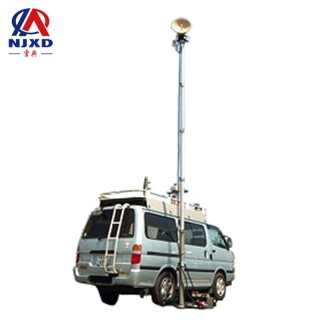NEWS
Key technologies of mobile lifting data communication
Time:2020-12-08 View:

Data transmission
In order to realize data communication, data transmission must be carried out, that is, data information sent from data sources located in one place is transmitted to data receiving devices in another place through the transmission channel. The channel used for data transmission can be a solid line baseband circuit, a frequency division analog circuit or a time division digital circuit. Due to the long development history, large communication capacity and wide coverage of telephone network, it is a common way to use it to provide data transmission channels economically and technically. However, when using telephone circuits as data transmission channels, certain measures must be taken to adapt to the requirements of data transmission signals.
In a data communication system, only the transmission function of sending data generated from one place to another cannot meet the requirements. In order to improve the transmission quality, reduce the error rate, and make the transmission process effective, the system must also have data link control procedures (see data link). In such regulations, all transmission control functions including error control are specified in detail. There are different types of data link control regulations for actual data communication systems or computer networks, some of which are in line with international standards, and some are formulated by countries or companies themselves.

Data exchange and communication protocol
In the data communication system or computer network, the transmission channel used can be fixed or provided by the switching network. There are two main ways of data exchange: Circuit switching and packet switching, among which packet switching is widely used in actual data networks. In a data network that adopts packet switching, in addition to implementing various functions required by data transmission and data link control regulations between adjacent switching nodes, data packets need to be stored and forwarded on each switching node. Routing, traffic control, congestion control, user access to the network, and network maintenance and management are also required. Accordingly, some related functions need to be implemented in the end system connected to the data exchange network. All these functions related to the formation of the data exchange network are regulated in the form of communication protocols, and they also include the interface protocols between the end system and the network. The so-called protocol means that both parties must follow the rules and conventions for accurate and effective communication. They are of great significance in data communication, and the data link control procedures mentioned above are actually a data communication protocol.
Data communication protocols can be divided into two categories:
One is the protocols related to the data communication network (sometimes called communication subnet from the perspective of computer network composition), including the protocols between internal nodes and nodes, and between the network and end systems. They are necessary protocols for constructing a data communication network and realizing data communication between end systems through it.
The other is the protocol between the end system and the end system, which is based on the functions realized by the previous protocol, in order to realize the intercommunication between the end systems and achieve certain application purposes, or to be exact, it is a protocol necessary to communicate between application processes of two end systems. All communication functions of a data communication system or computer network are generally divided and organized according to a certain hierarchical structure. Data communication protocols are actually specific provisions on the content and implementation rules of each layer's functions, so they are generally formulated by layer.

CATEGORY
NEWS
- Synchronization mode and characteristics of emergency lifting data communication
- Key technologies of mobile lifting data communication
- Application and development trend of data communication rise and fall communication
- Basic explanation of remote control remote control lift rod
- The development of remote control lifting bracket principle Radio